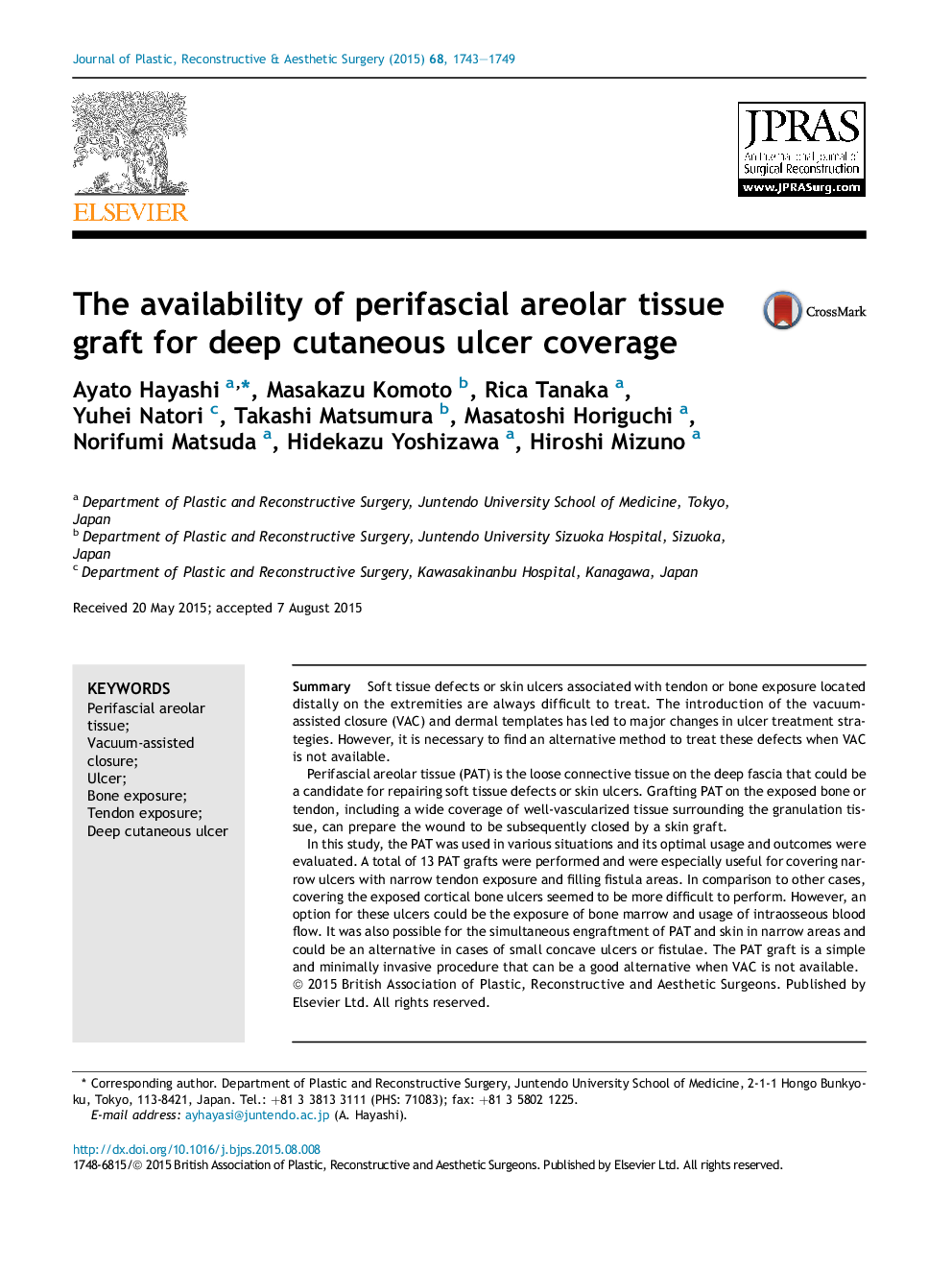| Article ID | Journal | Published Year | Pages | File Type |
|---|---|---|---|---|
| 4117491 | Journal of Plastic, Reconstructive & Aesthetic Surgery | 2015 | 7 Pages |
SummarySoft tissue defects or skin ulcers associated with tendon or bone exposure located distally on the extremities are always difficult to treat. The introduction of the vacuum-assisted closure (VAC) and dermal templates has led to major changes in ulcer treatment strategies. However, it is necessary to find an alternative method to treat these defects when VAC is not available.Perifascial areolar tissue (PAT) is the loose connective tissue on the deep fascia that could be a candidate for repairing soft tissue defects or skin ulcers. Grafting PAT on the exposed bone or tendon, including a wide coverage of well-vascularized tissue surrounding the granulation tissue, can prepare the wound to be subsequently closed by a skin graft.In this study, the PAT was used in various situations and its optimal usage and outcomes were evaluated. A total of 13 PAT grafts were performed and were especially useful for covering narrow ulcers with narrow tendon exposure and filling fistula areas. In comparison to other cases, covering the exposed cortical bone ulcers seemed to be more difficult to perform. However, an option for these ulcers could be the exposure of bone marrow and usage of intraosseous blood flow. It was also possible for the simultaneous engraftment of PAT and skin in narrow areas and could be an alternative in cases of small concave ulcers or fistulae. The PAT graft is a simple and minimally invasive procedure that can be a good alternative when VAC is not available.
